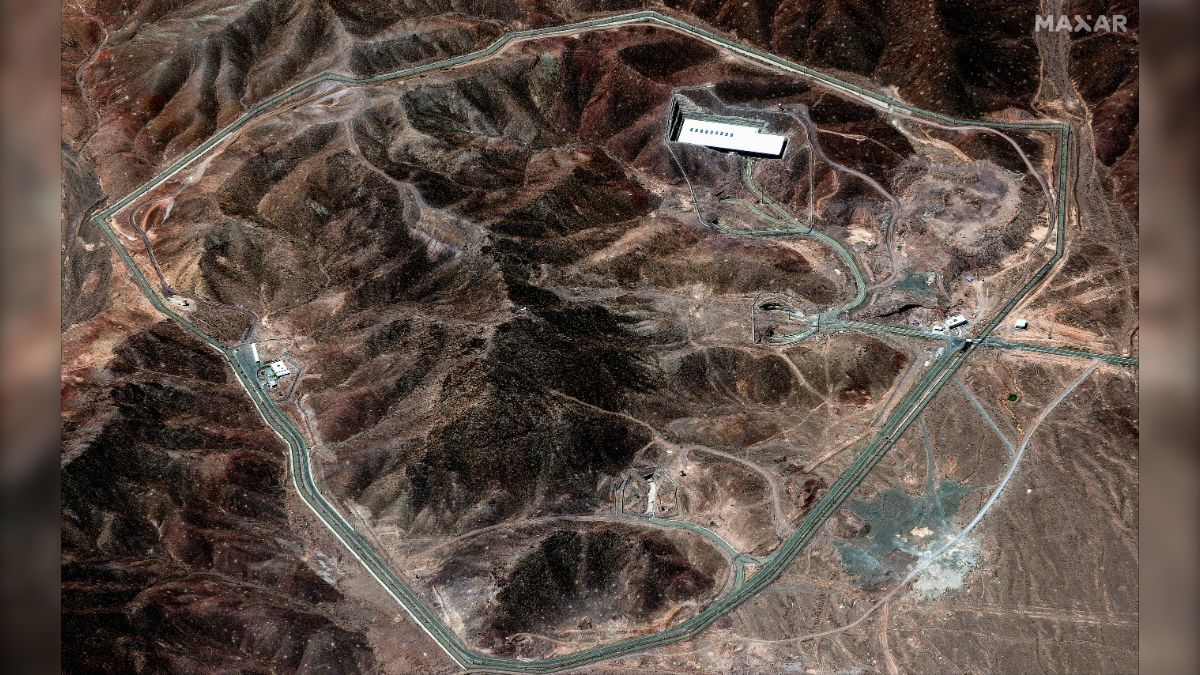June 13, 2025, turned out to be “Friday the 13th” for Iran after Israel unleashed Operation Rising Lion , targeting the Persian nation’s nuclear and military sites. The Israeli attack not only eliminated some of the top brass of the Iranian military, but it also pushed back Tehran’s highly controversial Nuclear programme .
Soon after the attack, Israel revealed for the first time Iran’s secret and accelerating plan for the development of a nuclear weapon that could threaten Israel. It is pertinent to note that the country’s Prime Minister, Benjamin Netanyahu, has been making accusations for years, even once presenting a cartoon of a bomb at the UN in 2012.
Israeli intelligence believed Iran was just weeks —or even days—away from assembling a nuclear bomb, with enough enriched uranium for up to 15 bombs and advanced missile capabilities. However, the country did not produce any evidence backing this claim.
How far was Iran developing Nuclear weapons?
Following Israel’s assertion, the UN nuclear watchdog , which carries out inspections in Iran, noted that while it cannot guarantee Iran’s nuclear programme is entirely peaceful, it has “no credible indication” of an active, coordinated weapons programme either.
Amid debates on the timeline, a US Intelligence assessment revealed that Iran was up to three years away from being able to produce a nuclear weapon, countering Israel’s claim that Tehran was just a few weeks away from assembling an atomic weapon.
The assessments are coming at a time when the Trump administration has been pushing for a nuclear deal with Iran. Both nations were conducting several rounds of talks regarding a deal before Israel launched strikes on Iranian territory. Many argued that the latest attack has reaffirmed Iran’s ambition to develop nuclear weapons.
How far the Israeli attacks pushed Iran’s weapons program
The Israeli operation targeted key nuclear facilities, missile factories, and air defences, and killed at least 14 of Iran’s top nuclear scientists, severely disrupting the expertise needed to complete a bomb. Israel also destroyed critical documentation and computer backups from Iran’s nuclear archive, further setting back the programme’s progress.
However, many argue that not much has happened with Iran’s nuclear program. According to a report by CNN, US intelligence officials believe that Israeli airstrikes might have set back Iran’s nuclear program by only a few months.
Impact Shorts
More ShortsMeanwhile, satellite images have shown significant damage to the Natanz nuclear site, which is touted as Iran’s most significant nuclear enrichment facility. Apart from this, a nuclear research centre in Isfahan was also hit in the attack. Despite Iran’s uranium stockpiles being stored at the heavily fortified Fordo facility , Israel claims its strikes and intelligence coups have set back Iran’s ability to quickly weaponise its nuclear material.
The loss of senior scientists and destruction of records means Iran’s successors will struggle to revive the programme at the same pace, according to Israeli officials. US intelligence sources told CNN that even after the strikes, Iran would need a maximum of up to three years to develop and deliver a nuclear warhead if it restarted its weapons programme now. Hence, it remains unclear how Iran would come out of this.


)

)
)
)
)
)
)
)
)



